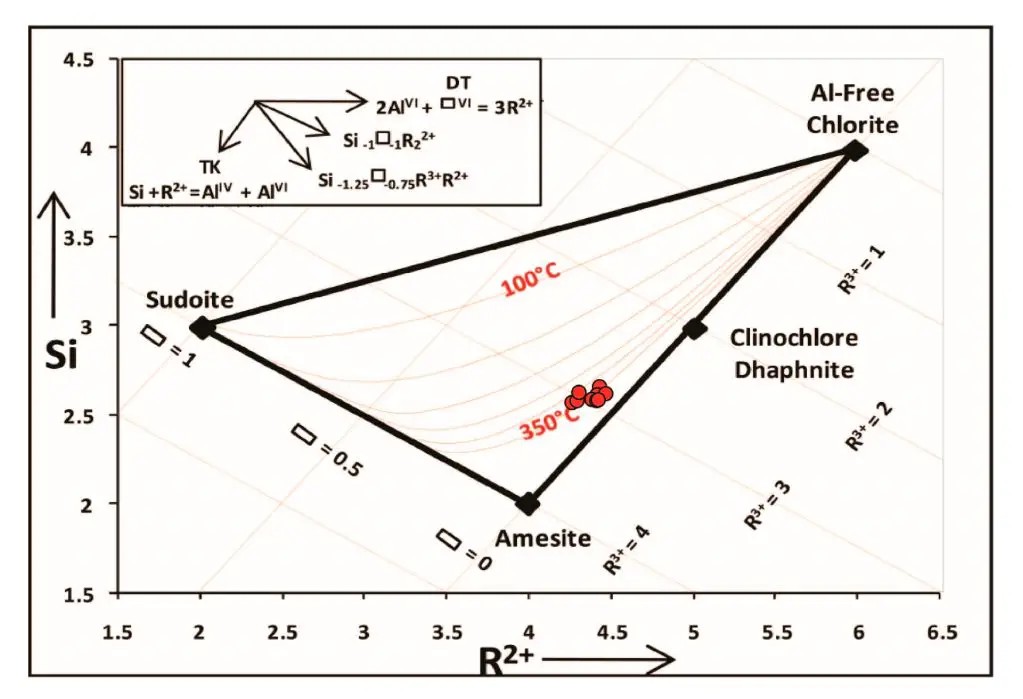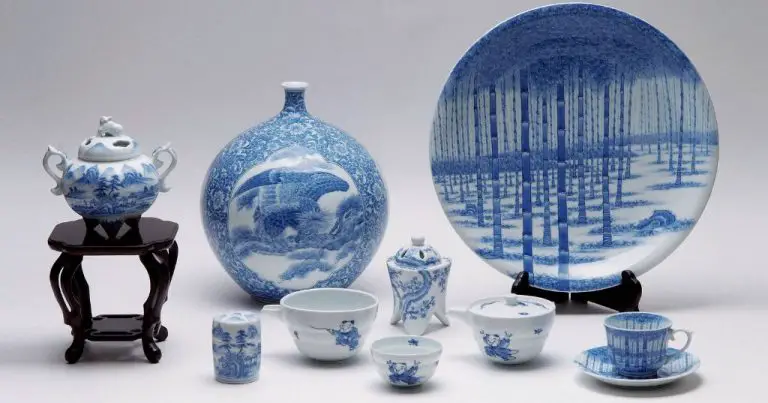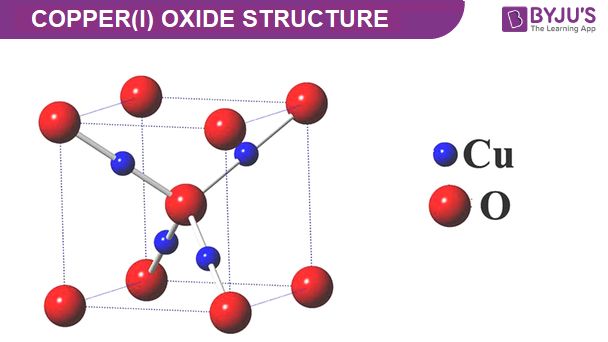What Is The Clay Used In Pottery?
Clay is an important material that has been used in pottery and ceramics for thousands of years. It is a naturally occurring material composed primarily of fine-grained minerals such as kaolinite, montmorillonite-smectite, illite, and chlorite (Source). Clay can be divided into three main categories: earthenware, stoneware, and porcelain. Each type of clay has different characteristics that make it suitable for various pottery techniques and firing temperatures. The plasticity and workability of clay allow it to be shaped into a wide variety of forms and objects. When fired at high temperatures, the clay undergoes permanent physical and chemical changes that turn it into a durable, ceramic material. The versatility and abundance of clay have made it an indispensable material for potters and ceramic artists throughout history.
Properties of Clay
Clay’s most important properties for pottery are plasticity, cohesiveness, and its ability to harden when fired. Plasticity refers to its ability to be shaped or molded without cracking or becoming misshapen. This property allows potters to form clay into various shapes. Cohesiveness relates to its strength in holding together and resisting breakage when in the plastic state. This allows forming a clay object before drying and firing. When fired at high temperatures between 1,800-2,400°F, clay undergoes chemical changes that cause it to permanently harden into a ceramic material. The clay is transformed through sintering from its raw malleable state into a strong, non-plastic material. Types of Clay for Pottery
Another key property is porosity, referring to the clay’s natural absorbency. Porosity allows evaporation during drying and affects the flow and retention of glazes. The clay body’s porosity depends on its composition and firing temperature. Lower fired earthenware has higher porosity with more absorbency. Stonewares have lower porosity at higher temperatures around 2,200°F. Porcelain clays have the least porosity when fired up to 2,400°F. The Basics of Pottery Clay
Types of Clay
There are several main types of clay used for making pottery, each with their own characteristics and purposes.
Earthenware clay is very common and one of the lowest fired clays, with firing temperatures around 2,200°F. According to this source it is quite porous and brittle unless glazed. Earthenware can come in various colors like red, brown, yellow, or white. It is used for flower pots, decorative ceramics, and tiles.
Stoneware clay is stronger and non-porous compared to earthenware due to higher firing temperatures between 2,200°F – 2,400°F. According to this article stoneware maintains its shape during throwing and can be left unglazed or brightly colored. It is popular for kitchenware and many functional pottery pieces.
Porcelain clay requires the highest firing temperatures, typically over 2,400°F. It can be translucent and is highly impermeable to water according to this source. Porcelain is stronger than stoneware but the high firing temperature makes it difficult to work with. It is used for tableware, art objects, and decorative ceramics.
Terracotta clay is an orange-red earthenware fired at low temperatures. According to this article it has a coarse texture and can be left unglazed. Terracotta is ideal for hand-building and sculpting as well as flower pots and vases.
Raku clay is a lead-free, hand-building earthenware fired at lower temperatures around 1,800°F – 1,900°F. According to this source, raku firing involves removing pottery from the kiln while hot and placing it into containers with combustible materials to produce unique finishes. It is ideal for non-functional, decorative wares.
Clay Composition

Clay minerals are composed primarily of fine-grained silica, alumina, and water. The basic building blocks of clay minerals are silica tetrahedra and alumina octahedra. In the silica tetrahedron, a silicon ion is surrounded by four oxygen ions. In the alumina octahedron, an aluminum ion is surrounded by six hydroxyl ions. These silica tetrahedra and alumina octahedra can be arranged in different ways to form various clay minerals.
The most common clay minerals include kaolinite, montmorillonite-smectite, illite, and chlorite. Kaolinite consists of silica tetrahedral sheets layered with alumina octahedral sheets. Montmorillonite consists of alumina octahedral sheets sandwiched between two silica tetrahedral sheets. Illite has a similar structure to montmorillonite but contains potassium ions which make its structure more rigid. Chlorite consists of brucite-like alumina octahedral sheets alternating with silica tetrahedral sheets.
In addition to silica, alumina, and water, clay minerals also contain varying amounts of alkali metals, alkaline earths, and other cations. The types of ions present affects the properties of the clay. Clay minerals also commonly contain around 5% organic matter from decayed plant and animal residues. The organic matter improves the binding properties of the clay.
Sourcing Clay
Clay is primarily sourced from deposits found in nature. These deposits are formed from the natural weathering of feldspar over millions of years. The feldspar breaks down into clay minerals that collect in layers. There are several ways that clay deposits are sourced:
Quarries – Clay can be mined from open pit quarries, similar to mining other minerals like stone or gravel. Quarrying involves removing the overlaying topsoil to access the clay deposits underneath. This is an intensive process but allows large scale extraction of clay.[1]
River and Stream Deposits – Clay often collects in rivers and stream beds through the process of erosion transporting clay particles downstream. These alluvial deposits can be accessed along river banks and collected.[2]
Once sourced, clay goes through an intensive processing stage to remove impurities and improve workability. The clay is mixed with water into a slip, and then screened, settled, filtered, and blended to achieve the desired smooth plasticity and consistency.
Preparing Clay
Before clay can be used for making pottery, it needs to be prepared properly. This preparation process ensures the clay has the right consistency and is free of air bubbles. There are several key steps involved in preparing clay:
Wedging – This involves repeatedly cutting, folding, and pressing the clay on a flat surface. Wedging evenly distributes moisture and removes air pockets from the clay body (1). It also breaks up clumps and makes the clay more pliable.
Slaking – Slaking involves soaking dry clay in water so it rehydrates. The clay is left to soak for several hours or days until it forms a smooth, plastic texture. Slaking reintroduces moisture into the clay body (2).
Kneading – Much like wedging, kneading involves pressing, folding, and working the clay to make it more pliable. It helps blend different types of clay together and removes air bubbles.
Aging – Letting clay rest for several days or weeks allows moisture levels to equalize and trapped air to escape. This makes the clay more plastic and workable.
Proper clay preparation through steps like wedging, slaking, and kneading is essential for making high quality pottery pieces without flaws from air pockets or inconsistent moisture levels.
(1) https://thepotterywheel.com/how-to-prepare-clay-for-pottery/
(2) https://www.ehow.com/how_5032982_prepare-clay-pottery.html
Working with Clay
There are several techniques used for working with clay in pottery making. The main techniques include throwing, handbuilding, molding, slipping, and decorating.
Throwing involves using a potter’s wheel to shape clay into circular pottery forms like bowls, cups, vases, and plates. This technique requires practice to center the clay on the wheel and shape it with your hands as the wheel spins. Skilled potters can create precise symmetrical shapes with throwing.The Crucible
Handbuilding is modeling clay by hand without the use of a wheel. There are several handbuilding techniques including pinching, coiling, and slab building. Pinching involves squeezing and pulling the clay to make simple shapes like bowls and cups. Coiling uses rolled out coils or ropes of clay stacked on top of each other to build taller forms. Slab building uses flat rolled out pieces of clay joined together.
Molding involves pressing soft clay into or over a form or mold to create a shaped piece. Plaster molds can be used to recreate the same shape multiple times.
Slipping refers to applying a thin layer of liquid clay slip to the surface of leather-hard clay before firing. Slip can be used to join pieces of clay or create decorative effects.
Decorating encompasses techniques like carving, incising, stamping, painting, and glazing to embellish the surface of pottery. These can be done when the clay is soft, leather-hard, or after firing.
Drying and Firing
After clay pottery is shaped, it needs to be dried before firing. There are a few key types of firing processes used in pottery:
Bisque Firing
Bisque firing refers to the first firing of the clay pieces. This is done at a lower temperature, typically between 1652-2102°F (900-1150°C), to harden the clay before applying glazes. Bisque firing evaporates any remaining moisture in the clay and makes the piece less porous. Pieces fired at higher bisque temperatures will be less likely to crack or break during glazing and subsequent firings.How To Dry Pottery Clay: Process, Tips and Techniques
Glaze Firing
After bisque firing, pottery pieces may have colored glazes applied to create different effects. Glaze firing is done at higher temperatures, usually between 2232-2372°F (1222-1300°C), to melt and fuse the glazes to the bisque ware. The glazes melt during firing and create a glossy, non-porous surface.How to Manage the Clay Drying Process
Raku Firing
Raku is a specialized firing technique originating from Japan. The bisque ware is fired in a hot kiln, around 1832°F (1000°C), then removed and exposed to smoke to create unique crackled effects. Raku firing happens very quickly, so the pots are still extremely hot when removed from the kiln.
Smoke Firing
For smoke firing, pots are placed into a kiln and combustible materials are added during firing to produce effects from smoke and flames. The smoke adheres to the surface of the clay, creating mottled colors and textures. Firing temperatures are usually around 1652-2192°F (900-1200°C). The process is difficult to control but can create one-of-a-kind results.
History of Clay in Pottery
The earliest known use of clay for pottery dates back over 20,000 years ago. Archaeological evidence shows that pots made from clay were in use in China during the Upper Paleolithic period. The earliest known fired clay vessels come from Japan, dating to around 14,000 BC.
One of the most significant developments in the history of pottery was the invention of the potter’s wheel around 3500 BC in Mesopotamia. The potter’s wheel allowed potters to create symmetrical vessels much more quickly and efficiently. Over the next several thousand years, pottery wheel use spread across many cultures worldwide.
Clay pots and ceramic vessels took on great cultural significance in many ancient civilizations and were closely tied to food storage and preparation. Styles and techniques of pottery decoration became hallmarks of certain cultures, like Ancient Greek painted vases and Chinese porcelain. Over centuries, clay pottery evolved from strictly utilitarian ware to become a revered artform in many societies.
Some key innovations that transformed pottery included the development of glazes, new high-temperature kilns, and refined clay purification processes. The discovery of porcelain, a delicate high-fired clay, in China around the 9th century AD was another milestone. Porcelain’s beauty and translucency greatly expanded the creative possibilities of pottery.
Throughout history, pottery has been integral to how human societies store, prepare, serve, and even revere food and drink. Though the craft has evolved tremendously, clay remains at the foundation of pottery’s enduring appeal and creativity.
Sources:
https://en.wikipedia.org/wiki/Pottery
https://www.lakesidepottery.com/HTML%20Text/brief%20history%20of%20clay_pottery.htm
Conclusion
Clay is an incredibly versatile material that has been used for pottery and ceramics for thousands of years. The type of clay potters choose to work with can greatly impact the final characteristics and quality of the finished piece. Factors like plasticity, firing temperature, color, and availability must all be taken into consideration when sourcing clay.
Understanding the composition and properties of the major types of clays is crucial knowledge for potters. The three main categories – earthenware, stoneware, and porcelain – each have their own strengths and ideal uses. Proper preparation, wedging, and storage of clay are also vital to achieve a workable consistency and avoid flaws. While clay may seem simple, it is a complex and nuanced material. Mastering the selection and handling of clay is essential for creating beautiful, functional ceramic ware.
The journey from raw clay to finished pottery is a transformative process. With care and skill, humble earth can be shaped into enduring works of art, craft, or utility. From prehistoric times until today, clay continues to be a foundational material for pottery, allowing for both artistic expression and functional design. As potters well know, clay may be natural, but working it skillfully into fired and glazed ceramics is truly an art.



